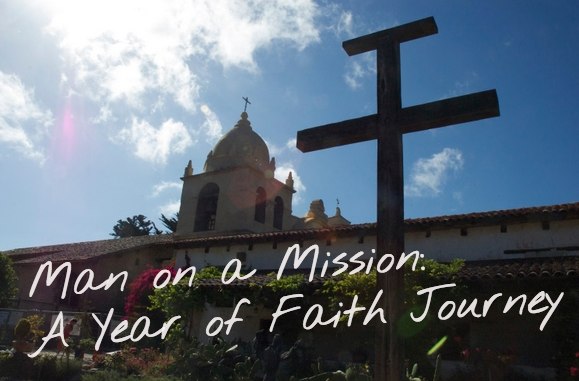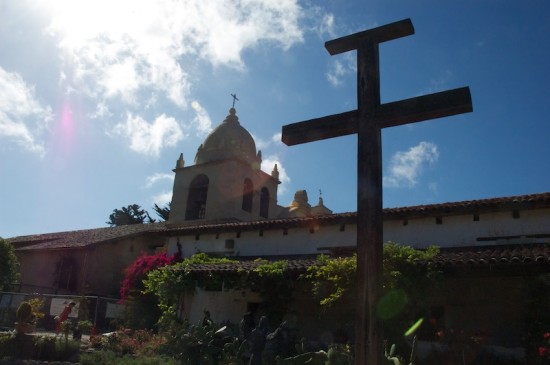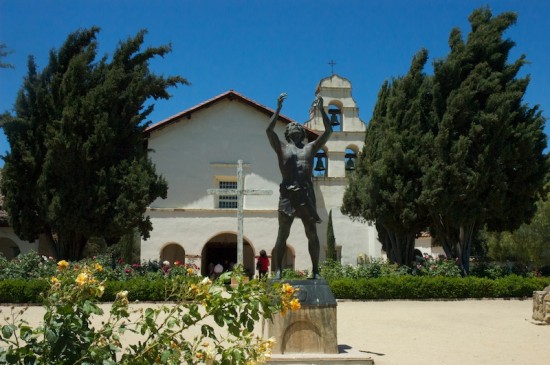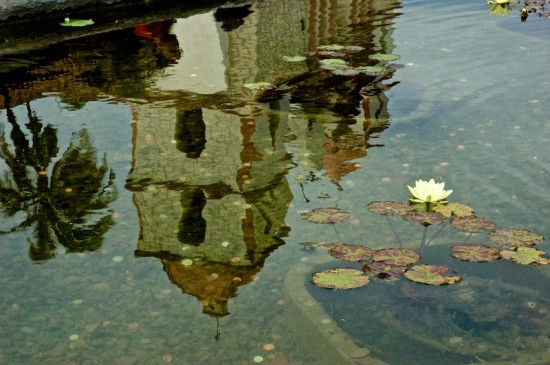Editor’s note: Today, we wrap up our special series with Kirk Whitney, “Man on a Mission.” We traveled with Kirk and Debbie Whitney on their pilgrimages to view and pray at the California Missions. Thanks to Kirk for this amazing opportunity to share these treasures with our readers during the Year of Faith! SAR
To commemorate the fiftieth anniversary of the Second Ecumenical Vatican Council, Pope Benedict XVI designated the period of time from October 11, 2012 to November 24, 2013 as the Annus Fidei or “Year of Faith.” The proclamation, issued by Pope Benedict and embraced by Pope Francis, makes a number of recommendations for the Church and its members to reflect on the work done by the council, the meaning of faith and the new evangelization.
One of the recommendations for individuals was to make a pilgrimage to a papal basilica, shrine, or other holy site. Touching on that recommendation, we decided to make pilgrimages to all 21 of the California Missions. (Not all missions are necessarily holy places, but as a group, I think they meet this criterion. Four of the missions are designated as papal basilicas.)
We began our visits on April 1 and completed our last on October 6. We visited the missions in groups of two to four at a time on a series of short trips from our home in central California. Since the idea to do this didn’t occur to us until March, we had just over six months to complete the nine trips required to visit all 21 missions. (Camera problems prompted us to make repeat visits to two missions to re-shoot photos that we had lost.)
We faced a number of challenges, and the most difficult was time. There are only one or two times a month when it worked for us to be away from home overnight. An early consideration was which missions could be visited on a day trip and which would need to be part of a weekend road trip. Fortunately, the central location of our home in Fresno, California puts us within a four-hour drive of about half the missions. Two of our nine trips did not require an overnight stay.
So what did we take away from our pilgrimage? I would love to tell you that it was an enlightening experience, that our faith was vastly deeper as a result of our visits and that our lives were transformed as a result. Life isn’t really like that most of the time, is it? Neither is faith.
Much of the time we were mired in the mundane details. By setting a tight time limit to complete our visits, we became very focused on schedules, logistics, and finances. Since I had also made a commitment to document our visits, I sometimes found myself so focused on photographing my surroundings that I didn’t always appreciate what I was seeing.
This is a problem with many spiritual exercises. Our expectations are grand and the resulting experience can seem a bit “dry”. I think that can be true when you are attending Mass, praying, or reading scripture. I am not suggesting that our experience was disappointing or that it was less than worthwhile. We had a great time and we learned a lot.
What we gained spiritually from our visits was subtle. The ultimate benefits of this pilgrimage will occur over a period of time and reflection. They will depend, to a large degree on the effort that we put into them. The ultimate benefits of our pilgrimage will be in “time release” form.
We have gained a greater understanding and respect for the evangelization undertaken by the California Missions. For the last few decades, it has been popular to dismiss the efforts of the Spanish Missionaries as exploitive and imperialistic. Spending time visiting the missions, exploring their museums, and reading about their history reminds us that things are never that simple.
Although you can argue that the appearance of the Spanish, the Russians, and eventually the Americans in California was a disaster for the indigenous cultures, there was also much that was positive about the relationships among these populations and the padres.
At Mission San Luis Rey, for example, the number of local tribespeople that wanted to live at the Mission far exceeded the Mission’s capacity. As a result, families took turns living there, rotating between the Mission and their villages. In 1833 when the Mission was secularized by the Mexican government, residents of the Mission followed the departing padre, Father Peyri, to San Diego begging him to return.
The principal thing I take away from our visits is that these 21 sites, although they have met different fates, still serve an active missionary role. (Four are Franciscan, one was turned over to the Jesuits, two are owned by the State of California, and the rest serve as parish churches in their local diocese.)
Two hundred years ago they served as Christian outposts in a pagan land. They now serve as Christian outposts in a pagan culture. We have come to a greater appreciation of our own parish as a result of our visits. We see the missionary role our own church and its congregation play much more clearly that we did before.
Well that’s it. Debbie and I are at the end of our Year of Faith Journey. I have enjoyed sharing it with you over the last several months.
Did you make any special journeys during the year? If so, please share them with us as well. Let us know about your Year of Faith experience in the comments below.
View additional information on this and other California Missions at missionimage.blogspot.com.
Copyright 2013 Kirk Whitney
About the Author

Guest
We welcome guest contributors who graciously volunteer their writing for our readers. Please support our guest writers by visiting their sites, purchasing their work, and leaving comments to thank them for sharing their gifts here on CatholicMom.com. To inquire about serving as a guest contributor, contact editor@CatholicMom.com.






.png?width=1806&height=731&name=CatholicMom_hcfm_logo1_pos_871c_2728c%20(002).png)
Comments